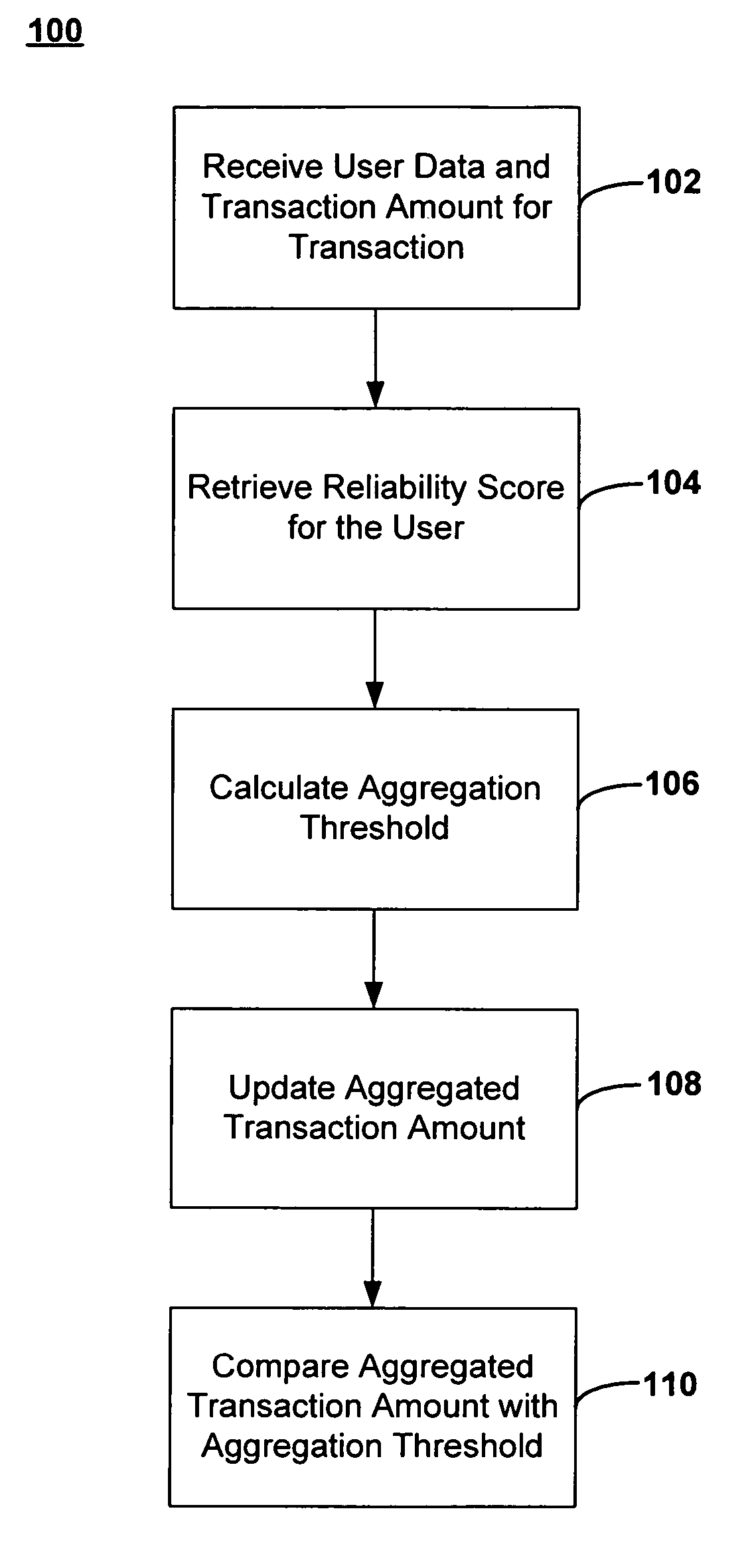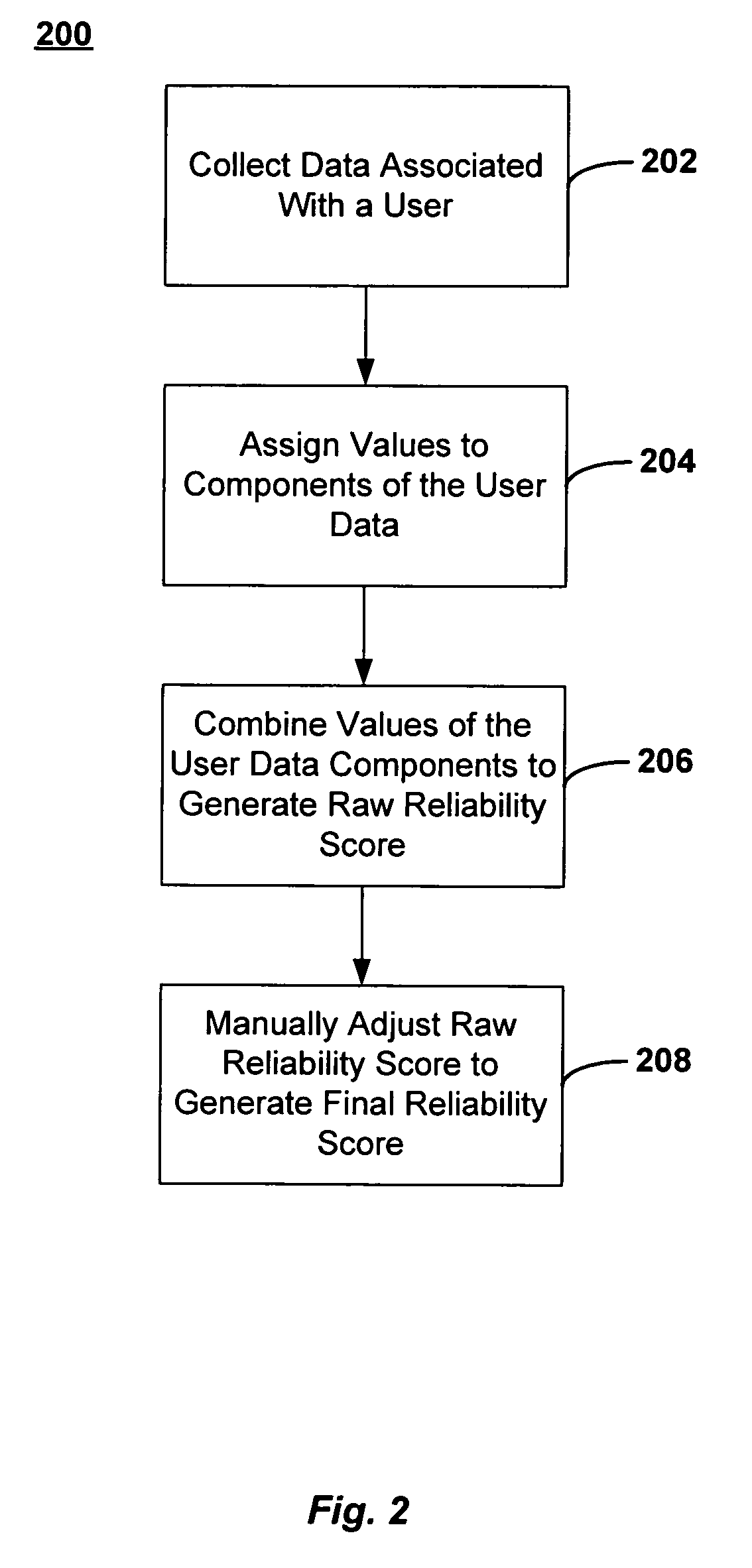Dynamic aggregation of payment transactions
a payment transaction and dynamic technology, applied in the field of dynamic aggregation of payment transactions, can solve the problems of increasing the processing costs incurred by the merchant or auctioneer, the cost of transmitting, storing, and the added cost of a business, and putting the economic viability of the business at risk
- Summary
- Abstract
- Description
- Claims
- Application Information
AI Technical Summary
Benefits of technology
Problems solved by technology
Method used
Image
Examples
Embodiment Construction
[0015] Aggregating multiple small transactions into a larger transaction offers a simple solution for controlling the transaction processing costs incurred by making large numbers of small transactions. However, the larger aggregated transactions also expose a merchant or service provider to risks of higher losses should a customer default on payment. Moreover, the risk of default also increases when the smaller payments are being aggregated over a period of weeks, or even months, before the customer must actually tender payment. The present invention addresses these and other issues with methods, systems and networks for aggregating a plurality of smaller transactions into a larger transaction for execution on an electronic payment network. A decision to aggregate two or more transactions may be facilitated by rules (e.g., computer algorithms) and manual controls set by a seller (e.g., a merchant or service provider) about when aggregation of a customer's transactions would be an a...
PUM
 Login to View More
Login to View More Abstract
Description
Claims
Application Information
 Login to View More
Login to View More - R&D
- Intellectual Property
- Life Sciences
- Materials
- Tech Scout
- Unparalleled Data Quality
- Higher Quality Content
- 60% Fewer Hallucinations
Browse by: Latest US Patents, China's latest patents, Technical Efficacy Thesaurus, Application Domain, Technology Topic, Popular Technical Reports.
© 2025 PatSnap. All rights reserved.Legal|Privacy policy|Modern Slavery Act Transparency Statement|Sitemap|About US| Contact US: help@patsnap.com



